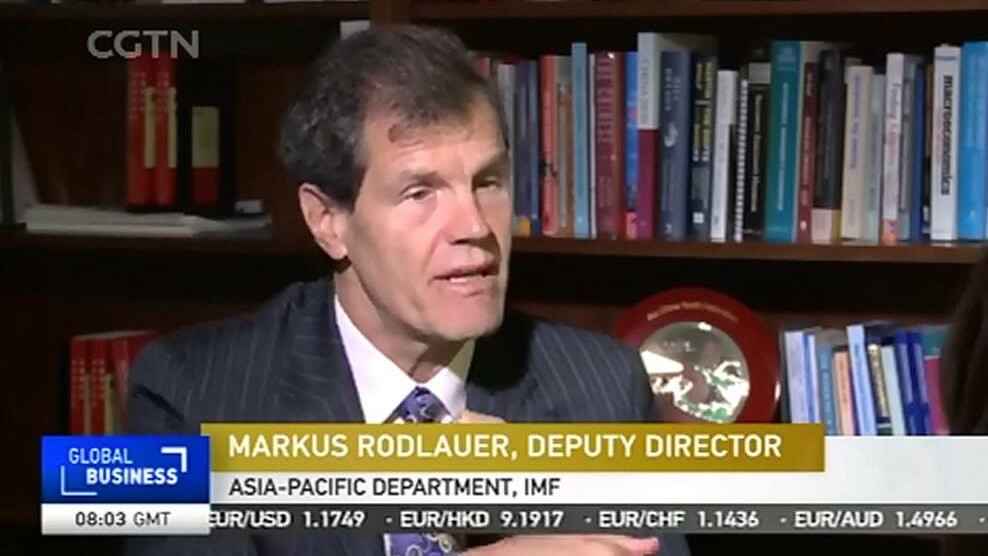
Business
20:16, 16-Aug-2017
IMF inches up China’s 2018-2020 GDP forecast
By CGTN’s Gao Songya

The International Monetary Fund (IMF) says China is continuing to transition to a more sustainable growth path, and has lifted the country’s annual growth forecast for the next three years to 6.4 percent from 6.0 percent.
Markus Rodlauer, deputy director of the IMF's Asia-Pacific Department, explained the factors behind IMF’s increasing confidence in China.

Rodlauer said international investments, reforms, stimulus from a year and a half ago, and skillful external sector management together produced a very good economic situation and good growth in China.
“Reforms being implemented in China are starting to bear fruits," said Rodlauer. "Supply-side reforms in the over-capacity sector in some state-owned enterprises and in the financial sector are helping the economy to do better.”
De-capacity is among the central government’s top priorities over the past two years. Last year, 118 listed companies from eight sectors troubled with high inventory and over-capacity, including steel, coal and electricity, had gone through restructuring or mergers and acquisitions to cut capacity.
However, the report did mention that IMF executive directors hope China to resort to market forces more when cutting capacity.

An abandoned coal mine near Taiyuan, capital city of Shanxi province. Shanxi in 2016 reduced coal output by 143 million tons amid the national de-capacity move. / VCG Photo
An abandoned coal mine near Taiyuan, capital city of Shanxi province. Shanxi in 2016 reduced coal output by 143 million tons amid the national de-capacity move. / VCG Photo
Rodlauer also noted that China has managed its external sector in a prudent way, as the country calmed down capital outflows and eased pressures on the exchange rates
The yuan exchange reform two years ago took the closing rate on the inter-bank forex market of the previous day into the formation of the yuan's central parity rate, as part of the efforts to make the RMB a more market-oriented currency.
That reform is starting to gain around with great economic performance. The yuan’s midpoint now stays at above 6.66 per US dollar, the strongest since last September.
The report also acknowledged that China’s continued strong growth provided critical support to global demand, and meanwhile urged China to broaden reforms in areas including hardening budget constraints, under-performing debt, and the exit of non-viable firms.
“We are happy to see the Chinese leadership already implement the first steps to financial reforms and make the system safer,” said Rodlauer.

SITEMAP
Copyright © 2018 CGTN. Beijing ICP prepared NO.16065310-3
Copyright © 2018 CGTN. Beijing ICP prepared NO.16065310-3